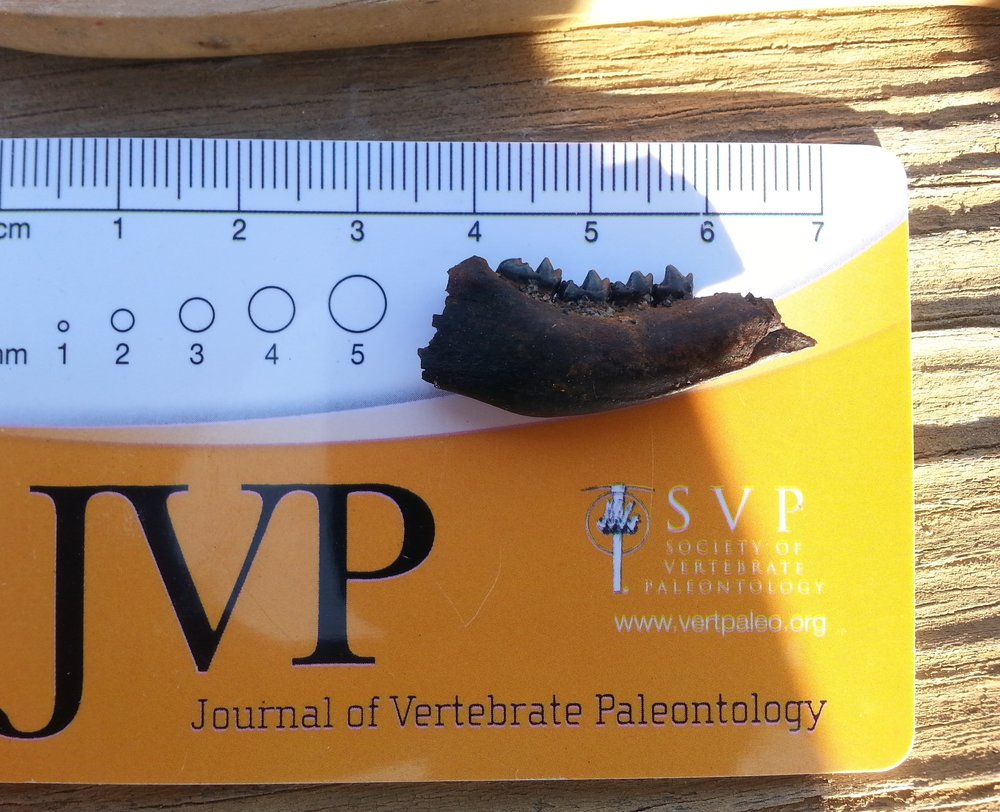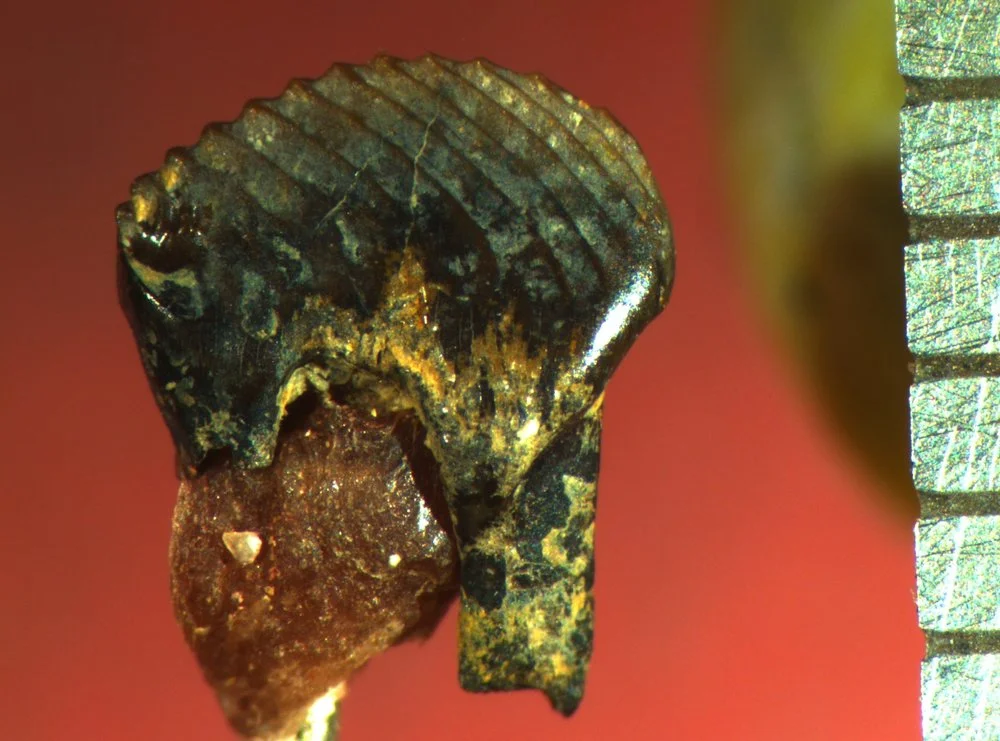Dissertation research
My dissertation focused on the taxonomic and ecomorphological diversity of fossil mammals in North America immediately after the extinction of non-avian dinosaurs. I executed this research in the beautiful Hell Creek and Tullock Formations of northeastern Montana, and worked with a number of collaborators on a variety of projects spanning morphology and paleoecology.
mammalian faunal dynamics in northeastern Montana
A mandible of the early Paleocene archaic ungulate mammal Mimatuta.
Using mammalian fossils from the McGuire Creek area of northeastern Montana, I tracked changes in mammalian faunal turnover through the first ~500,000 years following the Cretaceous-Paleogene (K-Pg) mass extinction event. With metrics including taxonomic richness, evenness, and heterogeneity, as well as correspondence and cluster analyses, and high-precision Ar/Ar radiometric dating techniques, this work sought to understand the tempo and mode of mammalian biotic recovery in NE Montana during the critical period of time following the extinction of non-avian dinosaurs.
I executed this work in collaboration with geochronologists Courtney Sprain (University of Leeds) and Paul Renne (Berkeley Geochronology Center), my graduate advisor Greg Wilson (University of Washington), Bill Clemens (University of California, Berkeley) and Donald L. Lofgren (Raymond M. Alf Museum of Paleontology).
This work was supported by the American Philosophical Society, American Society of Mammalogists, University of Washington Department of Biology, and University of California Museum of Paleontology Doris O. and Samuel P. Welles Research Fund.
Smith, S.M., Sprain, C.S., Clemens, W.A., Lofgren, D.L., Renne, P.R., and Wilson, G.P. 2018. Mammalian recovery following the end-Cretaceous mass extinction: A high-resolution view from McGuire Creek, Montana, USA. Geological Society of America Bulletin. doi: 10.1130/B31926.1
Fossil Species discrimination: Mesodma
A lower fourth premolar of Mesodma thompsoni.
The mammalian fossil record is largely composed of isolated teeth and tooth-bearing elements. In vertebrate microfossil assemblages with closely related, co-occurring species of mammals, it can be difficult to identify isolated teeth to species level because morphological differences among species may be slight and based on a single tooth position. In collaboration with my advisor (Greg Wilson), I investigated the utility of the allegedly diagnostic lower fourth premolar (p4) for species-level identification in the genus Mesodma (Multituberculata, Neoplagiaulacidae).
Our results indicate that size is more important than shape in determining species-level identification of these teeth, and that at least one species undergoes anagenetic over the Cretaceous-Paleogene mass extinction boundary.
Smith, S. M., and Wilson, G.P. 2016. “Species discrimination of co-occurring small fossil mammals: A case study of the Cretaceous-Paleogene multituberculate genus Mesodma.” Journal of Mammalian Evolution 24: 147–157. doi: 10.1007/s10914-016-9332-2
Mammalian Dental Ecomorphology
µCT scan surface model of lower second molar of Chriacus baldwini, a Paleocene archaic ungulate.
Using a suite of 3D surface metrics (orientation patch count, relief index, Dirichlet normal energy, slope) I predicted likely diet in early Paleocene mammals via comparison with tooth morphology in a variety of extant mammals with known diets. This work shed light on the diversification of dietary preferences in North American mammals during the early recovery period following the Cretaceous-Paleogene mass extinction event.
Smith, S. M., Aranoff, G., and Wilson, G.P. “Quantitative dental ecomorphology reveals a wide range of mammalian dietary ecologies in the first one million years following the Cretaceous-Paleogene mass extinction.” Society for Integrative and Com-parative Biology Annual Meeting 2016, Portland, OR; Society of Vertebrate Paleontology Annual Meeting 2016, Salt Lake City, UT.


